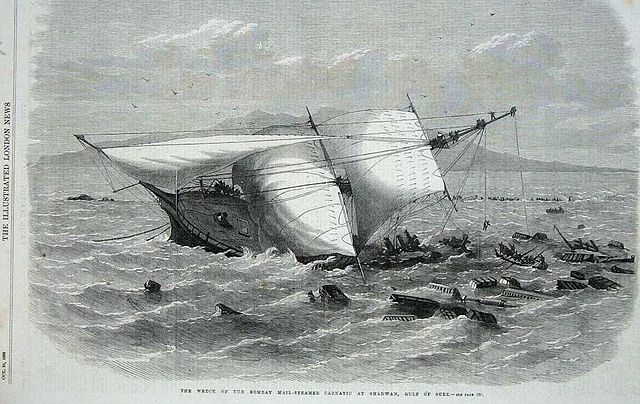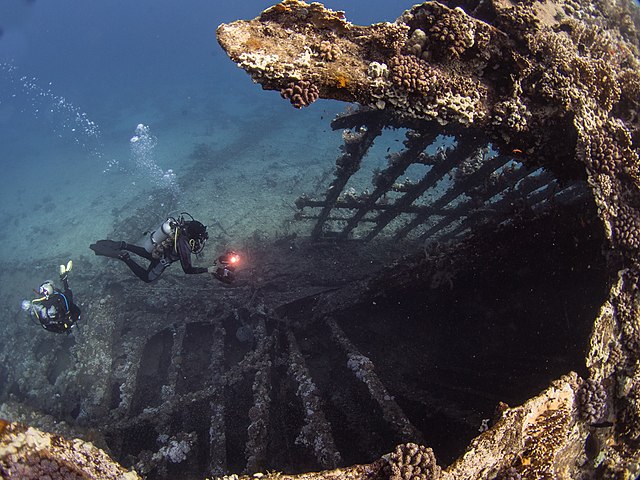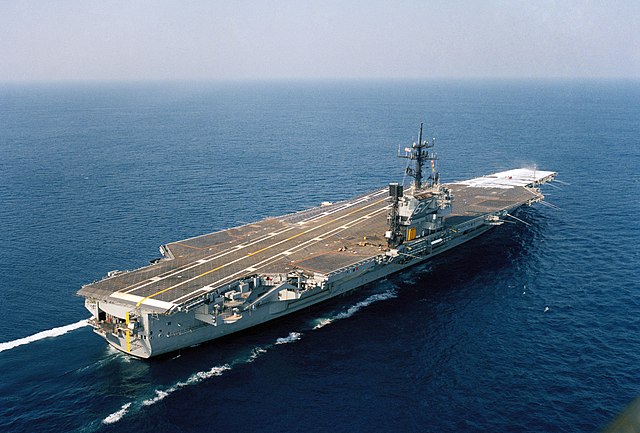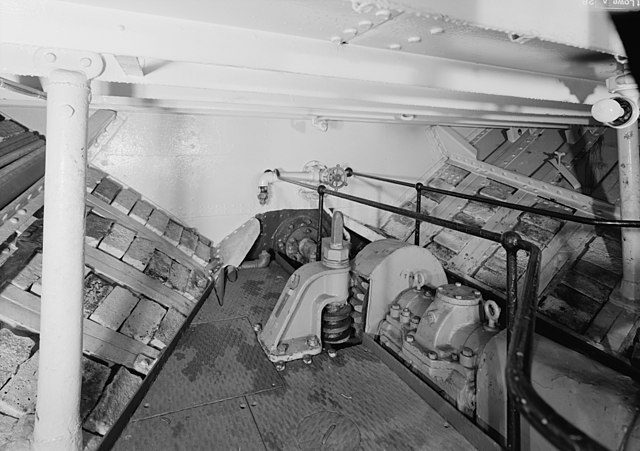SS Carnatic was a British steamship built in 1862-63 by Samuda Brothers at Cubitt Town on the Isle of Dogs, London, for the Peninsular and Oriental Steam Navigation Company (P&O). She operated on the Suez to Bombay run in the last years before the Suez Canal was opened. This route gave a fast, steamship-operated route from Britain to India, connecting with similar steamships running through the Mediterranean to Alexandria, with an overland crossing to Suez. The alternative was to sail round the Cape of Good Hope, a distance at which steam ships were not, in the early 1860s, sufficiently economical to be commercially competitive with sail.
SS Carnatic
A contemporary print of the wreck of Carnatic
Wreck of the SS Carnatic, in the Red Sea, Egypt.
A steamship, often referred to as a steamer, is a type of steam-powered vessel, typically ocean-faring and seaworthy, that is propelled by one or more steam engines that typically move (turn) propellers or paddlewheels. The first steamships came into practical usage during the early 1800s; however, there were exceptions that came before. Steamships usually use the prefix designations of "PS" for paddle steamer or "SS" for screw steamer. As paddle steamers became less common, "SS" is incorrectly assumed by many to stand for "steamship". Ships powered by internal combustion engines use a prefix such as "MV" for motor vessel, so it is not correct to use "SS" for most modern vessels.
The paddle steamer PS Waverley at Swanage is the world's last seagoing paddle steamer
An aerial starboard quarter view of the aircraft carrier USS John F. Kennedy (CV-67), which was the last US Navy aircraft carrier to use conventional steam power
The side-wheel paddle steamer SS Great Western, the first purpose-built transatlantic steamship, on its maiden voyage in 1838
Image of stern tube and propeller shaft in a lighthouse ship







